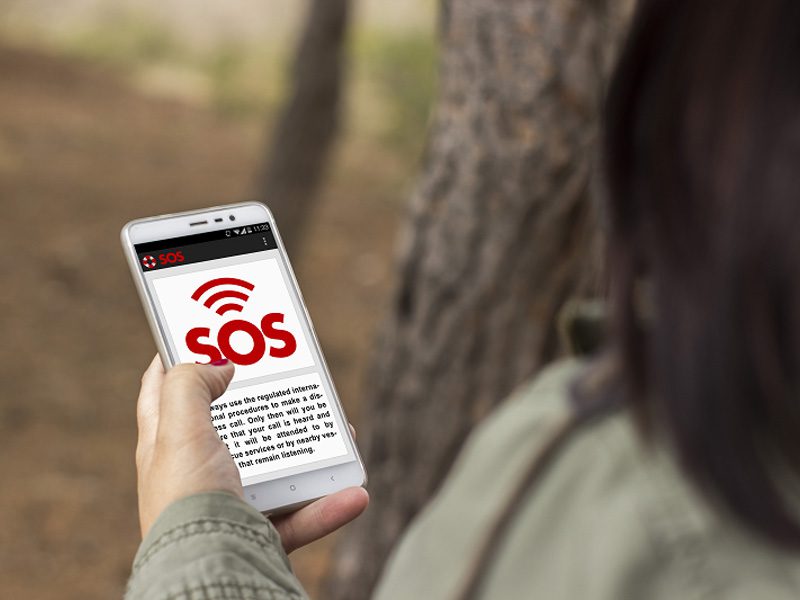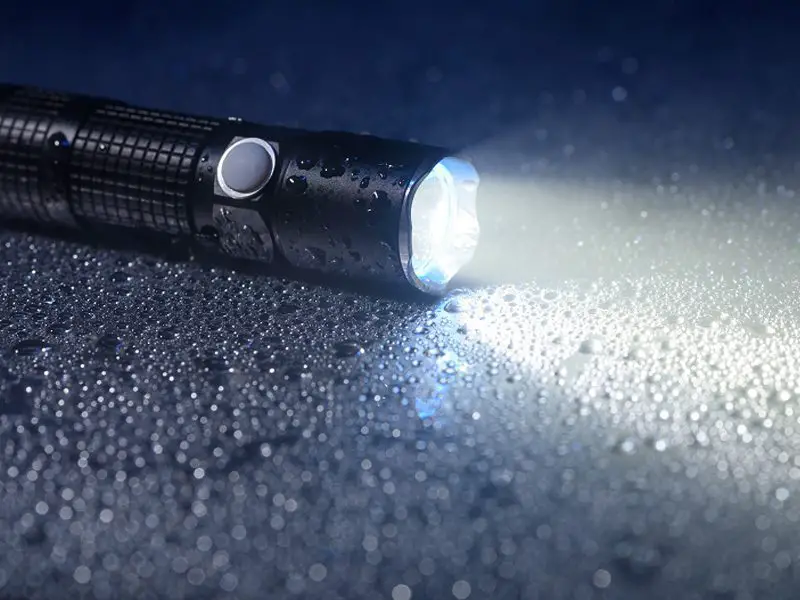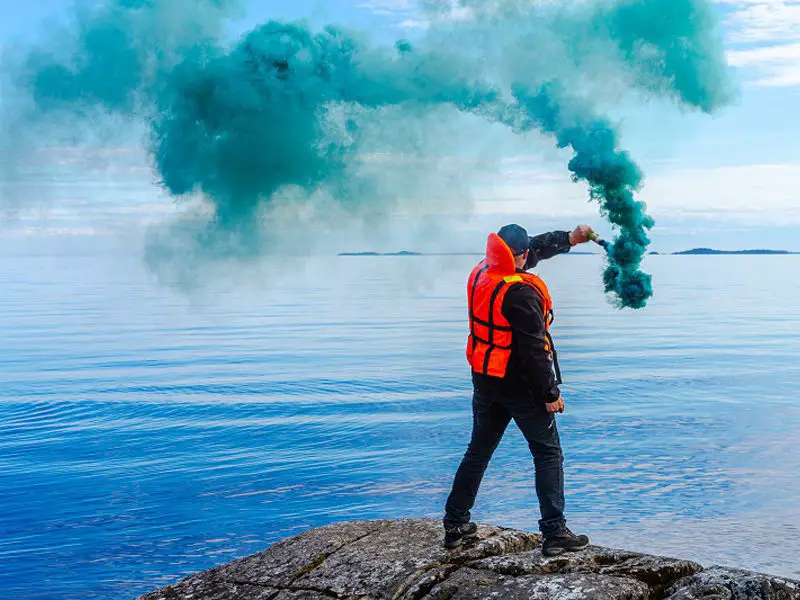SOS signals are used to contact rescue aides if you need immediate assistance. The signals are internationally recognized and should only be used if you are in actual danger.
You are out on the trail about three miles up the mountain, and your hiking partner falls and breaks a leg.
What do you do? If your cell phone is within range, you can call for help, but what if it’s not, or your battery just went out?
This is when you need to be prepared, and a little foresight and planning can make a difference. You need to send out an SOS signal, but how?
What does SOS mean?
SOS also stands for “save our souls” or, originally, “save our ship.” SOS signals are internationally used morse code distress signals that were originally used for maritime use.
Three dots and three dashes, followed by three dots, were an easy way to remember and be recognized in times of need. It is still in use today, along with other SOS signals.
Get the SOS signal out and communicate where you are.
If you ever need to use an SOS signal, know that the individuals responding to your signal will risk their lives to try and save you. Knowing how to send an SOS signal can save lives.
You first need to get your message out, and secondly, you need to be able to communicate your location to be rescued.
If you have a phone with a connection or can correspond with rescuers through a satellite messenger device, the emergency crew may be able to not only get the message that you need help but also pinpoint your location.
They may ask you where you are and what landmarks you see. How long have you been on the trail?
When I was on a national trail and went down to the nearest road to meet the rescuers to convey to them where my injured friend was, I counted how many steps I had traveled.
The rescuers were quickly able to convert the distance of the steps I had traversed into feet, and they decided to carry my friend out on a stretcher carried by four team members.
Most rescuers are very familiar with the area they cover; certain landmarks become familiar to them because they travel the area often.
Phones as Locator Devices

There are many different types of SOS signals today. If you have a smartphone and are in an area where you have connection coverage, you are in luck.
Your phone can become a tool to get help. Many phones have location trackers, and you can download apps that can help pinpoint your location to explain to others where you are located.
If you have an iPhone with iOS 14, you now have an emergency SOS feature. Any iPhone model after the iPhone 8 automatically comes loaded with emergency SOS features.
There is also a feature that produces a loud siren that can alert others to your need for help, plus an automatic call to emergency services in your area, as long as you have a connection.
Triggering the emergency SOS on an iPhone is easy. You need to hold down the lock button and one of the volume buttons together for 5 seconds to send the emergency SOS signal.
Keeping your fingers pressed for longer than 5 seconds will automatically initiate an automatic call and the phone’s siren.
You can also program your phone to send an automatic text message with your location details to your chosen emergency contact. You will need a SIM card. Android users may also have these features, like Samsung’s Emergency Mode.
With an iPhone or Android, you will need to enable this feature on your phone before you need it, and you will also need to designate emergency contacts through the Apple Health app or whatever Android system recommends.
Whenever you are adventuring outdoors in places where you may need help, you should let someone know where you are going, possibly the route you intend to take, and check in periodically.
Carry local emergency numbers with you, especially if you are in a foreign country; for example, 911 in America is like 119 in Korea. Having an extra battery charger may be worth its weight in gold if your cell battery runs out.
Keep your phone in a front pouch that is easily accessible. You do not want to have to take everything out of your backpack to find your phone in the bottom during an emergency.
Keep emergency numbers in the pouch as well. Either laminate or tape the card so that water can not destroy the writing.
Personal Locator Beacon and Satellite Messenger
If you are traveling solo in remote areas, you may consider a personal locator beacon (PLB).
One can send out an emergency distress signal that coordinates your location to a military-run set of high-tech satellites so the rescue team can find you.
PLB’s use a frequency of 406 MHz, reserved explicitly for distress calls. You extend the antenna and press a button to start your SOS signal.
Getting a PLB with GPS is crucial so your exact location coordinates are emitted. These are one-way communicators.
Personal Locator Beacon
- Once activated, an SOS distress signal with GPS position is...
- Small, rugged, lightweight personal locator beacon that is...
- Send pre-canned non-emergency self test and GPS test...
Using a PLB can save your life; however, it is a one-time and one-way communicator that sends a distress signal and coordinates to emergency services.
Never test a PLB just to check that the device is working, it is for one-time use only in emergencies, however tempting it may be to try it before you need to depend on it.
A satellite messenger is a communication device that can connect you via satellite so that your smartphone can work even if you can’t access your phone’s signal.
It is a two-way global SMS text messenger and email that helps send out an emergency SOS and has a GPS locator.
Satellite messengers usually have two-way communicators, so you can explain the problem and the rescuers can assess the seriousness of the situation.
Because they use commercial service providers, they usually have a monthly service fee in addition to the cost of the device.
Satellite messenger Android iOS Smartphone Accessory
- Global satellite messaging: Stay connected beyond cell...
- Emergency SOS: Send an SOS alert with your GPS location to...
- Optional Travel Risk Management Coverage: Feel more secure...
Some feedback by users of both devices is that they require a clear sky to access the signal. If you are under a rock overhang or a heavy canopy of leaves, the signal may be obscured.
SOS flashlight

Carry along an SOS flashlight. A flashlight can be used to signal the morse code of three dots (short turning of and off the light), three dashes (longer period of turning on and off the light source), and three dots.
Some of the better flashlights are waterproof and have up to 20 lumens of 360-degree light for over 17 hours. You may want to carry extra batteries just in case.
A little extra light might mean a lot when you are frightened or in distress.
Some emergency flashlights already have a pre-installed feature that emits an SOS signal.
If you do not have a flashlight, most cell phones have a torch option.
Survival Flashlight
- BRIGHTNESS: 25 lumens of bright, clean light with Steady On...
- DIMENSIONS: 3” H x 1” W and weighs 1 oz with (1) AAA...
- EASE OF USE: Easy twist collar ON/OFF and mode cycle...
If you do not have a flashlight and it is sunny, a hand mirror can catch the light and flash. Aim it in the direction of potential rescue, like a ship or airplane.
You need clear skies to be able to do this, and it works best in open areas, not under foliage or a cliff overhang.
Reflect three short times and then three long times, followed by three short times. Anyone who understands morse code should recognize your message and understand your call for assistance.
Many emergency survival whistles have a mirror inside the cap. Anything to catch someone’s attention.
Aluminum foil can work in a pinch, even a bright-colored jacket or scarf can be swung around to get the attention of a plane flying over.
Choose a colorful scarf, backpack, or jacket liner that does not blend in with the surroundings. Some people choose to carry three lightweight, colorful bandanas in their packs.
They can be displayed if you need attention. String them high up on trees so they can be seen above a ridgeline.
Using a bit of reflective tape on your jacket, backpack, vest, or bandana can be helpful if someone is trying to find you in the dark and uses a flashlight. The tape will reflect back the light.
In Alaska, when our children were little, everyone had reflective tape on their jackets so that cars could see them as they walked home from school in the dark. In December, that could be 21 hours out of a 24-hour day!
Survival Whistle
Bring a survival whistle with you and hook it to something on you that is easily accessible. You want to be able to get to it quickly.
Perhaps your group has spread out along the trail. Whistling will alert those near you to an emergency situation.
Additionally, the International Mountain Distress Signal consists of six whistles every minute, followed by a minute of silence. Then repeat.
That means you will need to blow into the whistle every 10 seconds for a minute, wait 60 seconds, and blow every ten seconds six times.
If you hear three whistles reply back, it means help is on the way. You can also whistle SOS in morse code but using sound. Three short beeps, three long beeps, followed by three short beeps.
Many whistles may come with a compass, a thermometer, and a small mirror in the cap. Some have small storage containers that can hold matches as well.
Survival Whistle SE 5-in-1 SurvivalWhistles (2-Pack)-CCH5-1-2
- Multifunctional Survival Tool: This 5-in-1 Survival Whistle...
- Loud 112dB Whistle for Emergencies: The whistle's powerful...
- Compact and Portable Design: Measuring just 4 1/2” in...
Water Rescue SOS Signals

If you are on a boat and have a marine radio, you can use the SOS morse code signal and also call out Mayday, Mayday, Mayday’ in emergencies only.
Less frequently used for urgent messages that aren’t emergencies, you can call out over the radio “pan, pan, pan.”. These radio emergency calls are often used on planes as well.
The difference is that radioing ‘pan, pan, pan’ alerts emergency services and other boats in the area that an urgent problem exists, whereas “mayday” gets others to stop all other activities and begin the search and rescue protocol.
Mayday should only be used in life-threatening situations.
If a Mayday call cannot be made because radio is not available, another vessel can make a Mayday call on its behalf. This is known as a Mayday relay.
Making a false distress call is a criminal offense in many countries and can incur fines, restitution, and possible jail time.
Pan pan comes from the French word ‘panne’, which means breakdown or failure. At Croydon Airport in London, Fredrick Mockford, an English radio officer, invented Mayday in 1923.
It comes from the French word ‘M’aider, which means “help me”.
If other boats can see you or if aircraft are flying above, an orange smoke flare is used during daylight hours and a red smoke flare is used at night.
International maritime signal flags N over C can be waived. Flag N consists of a blue and white 16 x 16 checked flag, starting with blue in the far left corner.
Flag C is a five-foot horizontal striped flag, starting with blue and ending in a blue strip. White, red, and white stripes are in the middle.
Fire SOS Signals
If you are in an open area, starting a contained fire can be used as an SOS signal. They are bigger than a cooking fire.
You can only efficiently do this at night since most fires are not so noticeable during the day.
If you do this, you need to be very careful that the fires are contained and will not start any brush fires. Set out three signal fires in a straight line or in a triangle.
Three fires signify the need for help.
If you want to try this during the day, you will need smoky fires to call attention to a rescue team. Add green leaves and wood to create smoke.
Both smoky fires and signal fires should be as high up as possible in areas that can be seen from far away.
A word of caution: once you have set up an SOS signal, like writing SOS in the snow or setting up a signal fire, destroy it after you have been found.
SOS Signal Conclusion
The more signals you send, the higher your chances are of getting rescued. A little pre-planning can go a long way.
We suggest you buy the survival whistle with the mirror, buy a waterproof flashlight, and keep your cell phone and extra battery pack or extra batteries in resealable waterproof bags since either device falling in water can be a disaster.



